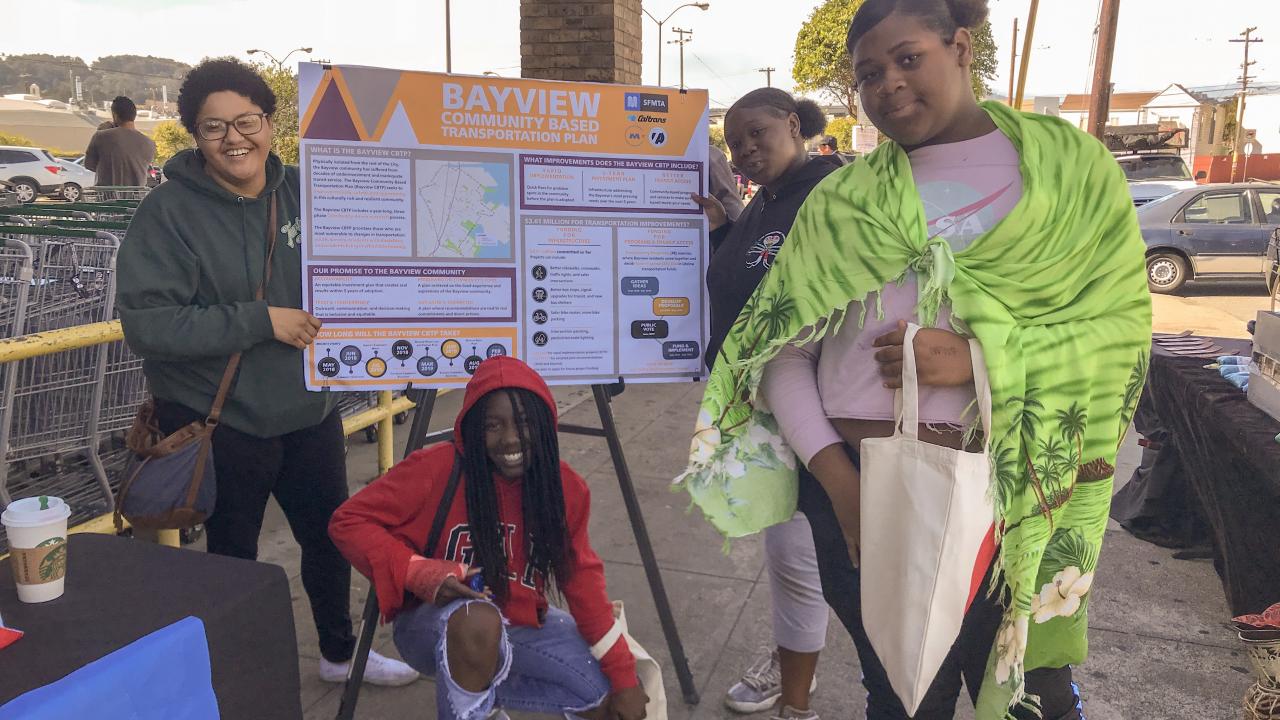
Improve Transportation By Engaging Diverse Communities
In order to improve transportation strategies and projects, government agencies must seek modes of community engagement, particularly with historically excluded communities of color. To understand this landscape better, and to promote just transportation planning, Rebecca van Stokkum (Geography graduate student) and I studied four successful participatory planning processes in San Francisco, Oakland, Fresno, and Los Angeles. We aimed to identify what made the processes successful and where further improvements were needed. To do this, we analyzed planning documents and interviewed planning process participants including agency staff, planners, and community members.
In the process, we identified ten key themes of successful community engagement between agencies and communities. These themes can be applied outside of transportation, as well, and paint a picture of necessary building blocks to successful planning.
- Trust is crucial. Residents showed up and engaged in transportation processes because people or organizations they trusted invited them. This trust did not extend to city agencies due to years of neglect and mistreatment. Building and maintaining respectful partnerships with community-based organizations (CBOs) can offer city agencies access to historically marginalized communities, which over time may develop into trust.
- Community-based organizations should be treated as equal partners. While it can be easy to treat CBOs like consultants, they are better thought of as equal partners. They represent a strong public constituency with different expertise than most government agencies. CBOs often have strong local leadership and significant collective power. An attitude of humility will aid planners in recognizing and honoring the expertise in CBOs.
- Pay community partners fairly. CBOs are providing transportation agencies with an invaluable service—access to hard-to-reach residents and sophisticated local cultural knowledge. They should be paid as experts ,and community members should be incentivized for their participation.
- Let community-based organizations decide what good community engagement is. CBOs know their constituencies and what will make them show up. Let them take the lead in planning engagement processes and events.
- Translate technical jargon. Translating bureaucratic processes and technical details is crucial to maintaining transparency and ensuring that communities have full information to inform their decisions. Think creatively with CBO partners about how to make information and processes accessible.
- Engage in community concerns beyond the scope of the project. Be willing to go outside the scope of the current project and engage in conversations beyond transportation. Consider how the agency or planner/consultant can use their power and relationships to help address other community concerns. This will help build trust.
- Address major community concerns such as displacement, policing, and youth development. Transportation challenges within historically marginalized communities are intimately connected with issues of displacement, policing, and youth development. Researching these issues ahead of time and being prepared to address them in a meaningful way will help transportation goals.
- Know local histories of transportation injustice. Virtually every community in the U.S. has a history of transportation infrastructure and planning causing harm to Black communities and communities of color. Agencies should enter public engagement processes knowing this history and should talk about it up front. Agencies should also consider how new projects can make amends for these past harms.
- Include the community in the final reporting process. The final plan or report should document the community engagement process and give credit for community members’ contributions. Community members should have an opportunity to contribute to or provide feedback on report drafts.
- Follow up planning with timely implementation. Many historically disadvantaged communities have been waiting for improvements for a long time. While involvement in planning process means a lot, immediate follow-through on community recommendations means even more. Potential strategies include setting aside funds for quick-build or pilot projects and updating CBOs regularly on the status of implementation plans.
Transportation agencies are recognizing the importance of undertaking robust public engagement, especially with historically disadvantaged communities. Many of these communities have been subject to redlining, division and demolition from highway construction or redevelopment efforts, and other forms of institutional discrimination perpetuated by civic agencies, including transportation departments. This history has fostered distrust, which makes public engagement efforts challenging. This challenge is exacerbated by a lack of networks that might aid transportation practitioners in connecting with local residents.
To address this issue, forward-thinking agencies partner with local community-based organizations (CBOs) that have strong connections to residents and the capacity to connect them with planning efforts. There are many challenges in forming and maintaining these partnerships. But through commitment to engaging community groups, agencies can find more success in their community-based projects.
More Information
This policy brief is drawn from the report “Answers from the Margins: Participatory Planning with Disadvantaged Communities” prepared by Sarah McCullough and Rebecca van Stokkum with the University of California, Davis. Research presented in this policy brief was made possible through funding received by the University of California Institute of Transportation Studies (UC ITS) from the State of California through the Public Transportation Account and the Road Repair and Accountability Act of 2017 (Senate Bill 1).